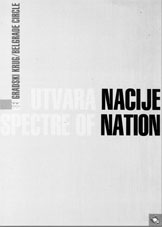


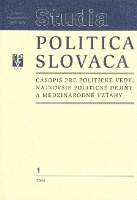
Keywords: politics; democracy; Slovakia; intellectuals; dissent; Charta 77; intelligentsia; VPN; OF; Civic Forum; Public against Violence; Communism; HZDS; Movement for Democratic Slovakia
Without intelligentsia, particularly without intellectuals, there would be neither Communist ideology, nor Communist movement. However, Marxist intellectuals of the communist regimes had been denied the freedom of intellectual movement, of critical invention. As a result, intellectual personalities (actors, writers, social scientists and also teachers) gradually, more or less conspicuously, left the Communist ranks. Their active participation grew into anti-Communist dissent. In Slovakia, this process was inconsistent and stopped somewhere halfway through as there was no compact or powerful intellectual dissent such as Charta 77 or the Polish KOR. When speaking about the Czechoslovak dissent launched by Charta 77, concentrated in the Chartist movement, which during the „Velvet Revolution of 1989” transformed itself into the „Civic Forum” (Občanské fórum), we mostly speak about the Prague events. Unlike their Czech partners, the Slovak intellectuals, who stood at the roots of the opposition movement „The Public against Violence (Verejnosť proti násiliu)”, were mostly members of the Communist establishment. The transformation process of the Czech Civic Forum and the Slovak Public against Violence produced new winners of the parliamentary elections of 1992, who were clearly and unambiguously separate both from the Czech intellectual dissent and from the Slovak intellectual elite and who divided Czechoslovakia into two independent states: the Czech Republic and the Slovak Republic. The new situation in the post-Communist Slovak Republic very strongly suggested certain analogies with the intellectual attitude to politics during the Communist era. The then victorious Movement for Democratic Slovakia (Hnutie za demokratické Slovensko) came into power, supported by part of the Slovak intellectual representation in a similar manner as did the Communist Party following the events of 1948. However, intellectuals gradually thinned the ranks of the Movement for Democratic Slovakia. As in the period when Communism went into decline in Czechoslovakia, so in this period, the only adherents who remained faithful to this „victorious movement” were party and state apparatchiks whose number, however, was not suffi cient for the effective control of its members and constituents. Vladimír Mečiar, President of the Movement for Democratic Slovakia, unwittingly managed to gather the Slovak intellectual elite under an umbrella of intellectual dissent. At that time, the main priority was getting rid of Mečiar and mečiarism, i.e., of his principle of one-leader management, which is inappropriate in the context of democracy and which is bred by pre-democratic and anti-democratic societies. The situation, by which the Slovak society became visible before the fall of mečiarism in 1997, could, from a certain perspective, be described as a crisis of political elite. This was a crisis of the Slovak political aggregate, which manifested itself in the behaviour of its actors.
More...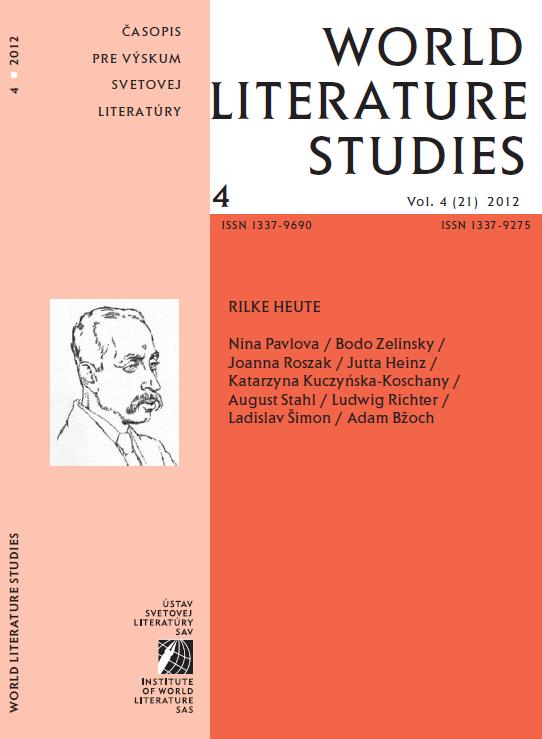
Keywords: Tim Sparenberg; Jana Cviková; Roman Mikuláš; Jozef Tancer; Juraj Dvorský; Martina Liščíková; Eva Bubnášová
Anke Bennholdt-Thomsen: Donaustrom und Meer. Wasser-Landschaft als Erinnerungs-Orte in Ingeborg Bachmanns Werk.; Jozef Ta ncer: Der schwarze Sabbat. Die Brandkatastrophe in Pressburg 1913 als Medienereignis.; Ján Demčišák: Queer Reading von Brechts Frühwerk.; Sib ylle Moser: Mediales Embodiment. Medienbeobachtung mit Laurie Anderson.; Moritz Csáky: Das Gedächtnis der Städte. Kulturelle Verflechtungen – Wien und die urbanen Milieus in Zentraleuropa.; Dominic Berlemann: Wertvolle Werke. Reputation im Literatursystem.; Ma tías Ma rtínez/Mi chael Scheffel: Einführung in die Erzähltheorie.; Kurt-H. Weber: Die literarische Landschaft. Zur Geschichte ihrer Entdeckung von der Antike bis zur Gegenwart.; Bodo Zelinsky (Hrsg.): ZOE . Schriftenreihe des Zentrums Osteuropa. Band 3: Aufsätze zur Theorie und Geschichte der slovakischen Sprache, Literatur und Kultur.;
More...Kurtág György–Tandori Dezső: Ima, régi, esti • 823 Tandori Dezső: Kurtág Györgynek • 826 Munkák kísérőszövegekkel • 828 Tóth Krisztina: Csillag • 832 Markó Béla: bedo1922 • 833 Retró (curriculum vitae) • 834 Egressy Zoltán: Ne félj tőlem • 836 Imre Flóra: „Sous le pont Mirabeau” • 841 Dea Dia • 842 Papp Sándor Zsigmond: Az első napon • 842 Győri László: Az én istenem • 854 Jónás Tamás: Az élet útjának felén • 855 Nóta kettő, három... • 855 Ijjas Tamás: Levél a jelképek erdejéből, azon is túl, madarakkal • 856 „Nincsen két mérce”. Fodor Géza levelei Petrovics Emilnek • 860 „...így kezdődöm én a Névtelen Jegyzőnél” (II) Szabó Zoltán levelei Ortutay Gyulának (Közzéteszi Varga Katalin) • 873 Sumonyi Zoltán: Elégia az assisi cipőről • 886 Bognár Péter: Intenzív havazás kezdődik • 887 Az 1-es számú gondozóegység megebédelt • 888 Vörös István: XLII. zsoltár • 891 XLIII. zsoltár • 892 Szabó Imola Julianna: Zsályacukor • 893 Apámmal • 894 FIGYELŐ Kocsis Zoltán: Chopin kezdőknek és haladóknak (Ingolf Wunder: Chopin Recital) • 895 Mesterházi Mónika: Lélek és test (Takács Zsuzsa: Üdvözlégy, utazás!; A test imádása – India) • 906 Keresztesi József: Találtam egy könyvet. Szögek a szájban (Czakó Gábor: +) • 911 Radnóti Sándor: Újraolvastam... Vita (Czakó Gábor: +) • 918 László Ferenc–Reichert Gábor: Két bírálat egy könyvről (Vajda Miklós: Éj volt, egy síró magyar költővel az ágyon. Portrék) • 921 Pintér Tibor: Publikus magánszínház (Fodor Géza: Mi szól a lemezen? I. Operafelvételek Monteverditől Lisztig) • 925 Erős Ferenc: Meta noia (Heller Ágnes: Az álom filozófiája) • 930 Lővei Pál: Világkiállítások könyve (Székely Miklós: Az ország tükrei) • 935 Takács Ferenc: Géher István (1940–2012) • 940
More...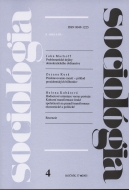
Keywords: Identity; representations; Goffman; textual and visual form
Representations of Virtues: Examples of Presidential Billboards. The article explores self-representation as an interaction duty of potential interaction partner to suggest his or her trustworthiness (Goffman 1959). It analyses the process of representation of personal virtues on the example of actors of special sort – six the most successful candidates in the first round of the 2004 Slovakian presidential campaign – and in a special interaction space – on spacious billboards used in the campaign. Organization of the visual and textual ways of the representation of fiduciary virtues (Barber 1983, Luhmann 2000) is analysed with use of the conceptual framework in which the author tries to link the term of face-work and team-work (Goffman 1959, 1967), dialogical self (Bachtin 1988), multi-voice self (Hermans 1996), positioning (Davies & Harré 1990) and priming (Iyengar – Kinder 1987) to promote a dynamic perspective on self-presentation and to explore the textual and visual means/forms of self-representation. After introducing the analytical frame, the paper continues with the debating the problems of the self-presentation and articulating representative or ‘presidential’ virtues to a general public (Druckman 2004). The presidential billboard case study focuses especially on a) how the personal reliability is demonstrated, b) how virtues are objectified a c) how diverging candidate’ loyalties are managed. It is argued that the analysis of visual form of self-representation suggests more clearly that the self-representation is organized as the orchestration of numerous human and non-human voices, including a voice of silence. Sociológia 2005, Vol. 37 (No. 4: 323-350)
More...* Einar THOMASSEN, The Spiritual Seed: The 'Church' of the Valentinians, Leiden/Boston: Brill, 2006; xv, 549 p. ISBN 90 04 14802 7. * Gerard P. LUTTIKHUIZEN, Gnostic Revisions of Genesis Stories and Early Jesus Traditions, Leiden/Boston: Brill, 2006, xviii, 210 p. ISBN 90 04 14510 9. * 1 Corinthians Interpreted by Early Christian Commentators, translated and edited by Judith L. KOVACS, William B. Eerdmans Publishing Company, Grand Rapids, MI — Cambridge, UK, 2005, 340 p. - ISBN 978-0-8028-2577-3. * Moshe IDEL, Ascension on High in Jewish Mysticism. Pillars, Lines, Ladders, Pasts Incorporated, CEU Studies in Humanities II, series editors Sorin Antohi and László Kontler, Budapest-New York, Central European University Press, 2005, x-250 p. - ISBN 9637326022 (hardbound) ; 9637326030 (paperback). * Claude STERCKX, Les mutilations des ennemis chez les Celtes préchrétiens. La Tête, les Seins, le Graal, préface de Bernard Sergent, collection Kubaba. Série Antiquité, Paris, L’Harmattan, 2005 îjuinº, 184 pp. — ISBN 2-7475-8341-4. * Mihail NEAMTU, Bufnita din darâmaturi. Insomnii teologice, Bucuresti, Editura Anastasia, 2005 (mai), 470 p. - ISBN 973-87245-4-6. * Intâlniri cu / Encounters with Mircea Eliade, volum coordonat de Mihaela GLIGOR si Mac Linscott RICKETTS, cuvânt inainte si indice de Mihaela Gligor, prefata de Mac Linscott Ricketts, Cluj-Napoca, Casa Cartii de stiinta, 2005, 256 p. — ISBN 973-686-682-3. * Attilio MASTROCINQUE, From Jewish Magic to Gnosticism, Tübingen: Mohr Siebeck, 2005, xv, 246 p. ISBN 3-16-148555-6. — Carl B. SMITH II, No Longer Jews: The Search for Gnostic Origins, Peabody, Massachusetts: Hendrickson Publishers, 2004, xvii, 317 p. ISBN 1-56563-944-8. * Mihai-Razvan UNGUREANU, Religious conversion and integration in Moldavia at the beginning of modern age, coll. “Historica”, Iasi, “Al. I. Cuza” University Publishing House, 2004, 412 p. — ISBN 973-703-051-6.
More...Keywords: modernism; postmodernism; interactions between East and West.
The article deals with relations between modernism and postmodernism in large cultural and historical framework. Postmodernism here is not understand as continuation or as negation of modernism, but as a jin jang energy, fertilizes each other, rises and fades out togather. Author does not work with notions postmodernism and modernism as with cultural-sociable phenomenon typical for Euroamerican society, but as an opposition of understanding of those phenomenon in strictly territorial determination. It is not territorial phenomenon but historical phenomen determined by interactions between East and West. Author uses to describe postmodern situation in European literatures with term "change of the rules of the game" as deviation of European literature from genre-typological agreements, which were originate in Rennaisance. Today this change manifests in certain syncretism and fictional autobiographism of huge amount of European literatures, influenced by Eastern poetic and semantic structures, and also by Nonwestern philosophical tradition.
More...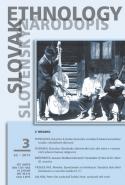
Keywords: Holocaust in Slovakia, Holocaust memorial day, politics of memory, media, public representation
The paper is bringing first information about the ways how Holocaust and the wartime Slovak State are commemorated in Slovakia in years 1990 – 2013. The author studied and analysed choosen media production in years 1990 – 2013 and has made research focused on commemorative activities during the Memorial Day dedicated to Holocaust and Racism Victims in Slovakia (September 9th) since 2001. She is interested in the content of political speeches, media articles, TV and radio broadcasting, and she investigates which kind of representations of the Holocaust in Slovakia and the wartime Slovak State are using by politicians and the media after 1989.
More...Muhamed Dželilović - Čovjek, Bosna i svijet u umjetničkim vidicima Abdulaha Sidrana Jasmina Ahmetagić - Empatija u poeziji Abdulaha Sidrana Muris Bajramović - Pjesnik i smrt Piero Del Giudice - Bilješke za Abdulaha Sidrana Sinan Gudžević - Rat je bio mila majka Nikola Petković - Kontramemorija, kontrahistorija, mikrohistorija, metahistorija u Partizanskom Groblju Abdulaha Sidrana Muharem Bazdulj - Sidranovo Sarajevo Dijana Hadžizukić - Narativno i lirsko kazivanje u romanu Potukač Abdulaha Sidrana Damir Ovčina - O čemu Sidran govori kad govori o Bosni Asaf Džanić - Scenaristički postupak Abdulaha Sidrana Muhidin Džanko - Metodički pristup piscu u nastavi književnosti i bosanskoga jezika: Nastavni sat(i) s Abdulahom Sidranom Vedad Spahić - Sidranova poetička samoporicanja Amela Šehović - Analiza diskursa moći u drami A. Sidrana U Zvorniku ja sam ostavio svoje srce Silvio Ferrari Čovjek, Bosna i svijet u umjetničkim vidicima Abdulaha Sidrana
More...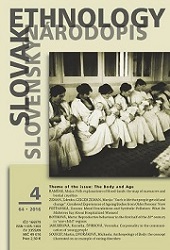
Keywords: blood; cultural perceptions of blood; blood-lands; ethnology; anthropology of space and place;
Blood is not solely a body part and a medicinal substance; it’s likewise a metaphor for life. Blood as a social concept has mainly been explored as a symbol of kinship, genetic heritage and lineage, nationalism, race, taboo, in rituals, and blood donations. Besides that, ethnic or national survival is also written on the map with bloody place-names. When the soil is soaked with blood of patriotic defenders and endangering others, the collective memory creates new bloody geographical names. They record the evidence of historically important harsh events, remind us of heroic battles, neighbouring antagonisms, or, provide an insight into religious changes in the area. The stories of violent killings and bloodshed in defence of a country, enriched with fears, imagination and prejudices towards the bloodthirsty foreign invaders, such as Turks or French, upset people’s blood. Though the base kri, blood, Blut, krvav, blutig is proportionally rare in Slovene toponymics, these geographical names describe historic episodes of groups and a nation. The tales about the origin of bloody place-names and about the horrific blood spill, which stops the blood in the veins, became a part of the nation’s cultural heritage.
More...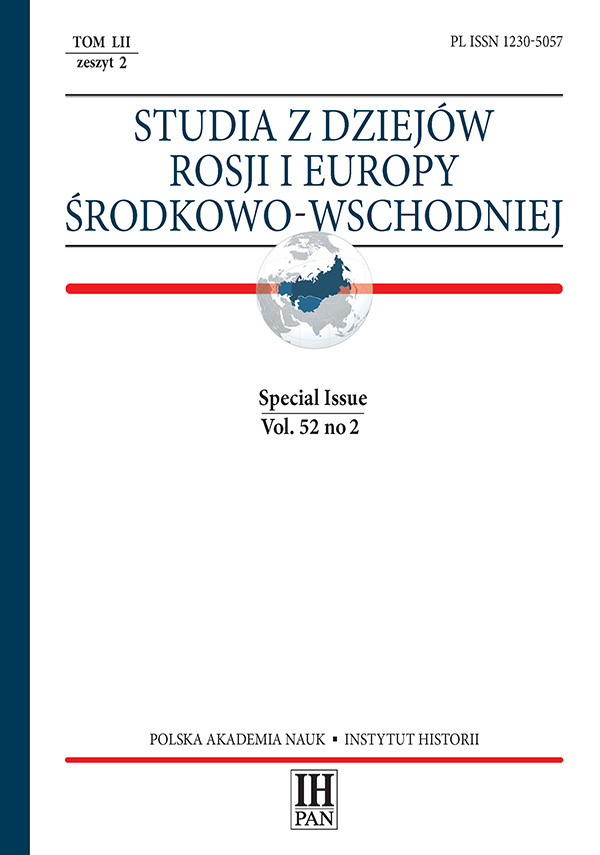
Keywords: Czechoslovak cinema; homosexual phantasm; queer cinema; normalisation in the Czechoslovak Socialist Republic; totalitarian indoctrination; Václav Krška; Spartakiads; Stanislav Strnad
The author – inspired by the notion of “phantasm” as proposed by Maria Janion, and using the concepts of, among others, German Ritz (the poetics of inexpressible homosexual desire and “complex of corporality”), Marc Ferro (film as a symptom revealing the “hidden side” of power and society) and Michel Foucault (“arrangement of sexuality”) – examines the attitude of Czechoslovak cinema towards male nudity and sexuality in a broader context of socio-political history and filmmaking in Czechoslovakia after the Second World War. An analysis, centred on two films: the Labakan (The False Prince) by Václav Krška (1956), and Kluci z bronzu (Boys of Bronze) by Stanislav Strnad (1980), is to comparatively examine how homosexual phantasms were sublimated and transferred to the screen in two historical moments – in the second half of the fifties, i.e. when the country was going out of the Stalinist and socialist realism period, and at the turn of the eighties, that is in the middle of the period of normalization and the regime of Gustáv Husák. The main purpose of the analysis is to examine a symptomatic change in quality – called by Szymański as “degeneration” – of the way in which homosexual imaginations were disclosed and functioned in films, that reflected their appropriation, “reorientation” and exploitation by the totalitarian authorities. In the rich literary, dramatic and film achievements of Krška we find many homosexual “hidden signals” as well as clear connotations and indications, expressing themselves in, among other things, spectacularization and erotization of the male body, a peculiar construct of protagonists-outsiders, questioning of gender stereotypes, stylisation modelled on antiquity, oriental or expressionistic one, etc. Special place in his creativity is occupied by the Czechoslovak-Bulgarian film super-production titled Labakan (The False Prince), in which the adaptation of the fairy tale about a tailor’s apprentice who wanted to take the place of the vizier’s son became for the director a vehicle for his personal, author’s commentary. The homosexual (homotextual) character of Krška’s film reveals itself in its transgressive plot open to a “double reading”, in its specific pansexuality and the “complex of male corporality”, governed by the logic of covetous look, and in the paracamp aesthetic associated today with queer style. In Szymański’s opinion, the materialization of homosexual phantasms on the screen offered both for the author and the spectators an area of freedom and “artistry of life”: on the one hand it offered them shelter and was an escape from the oppressive cultural reality, on the other – it was becoming the means to contest and the practice of resistance to the heteronormative and totalitarian world. Whereas a barracks-sports farce titled Kluci z bronzu (Boys of Bronze) by Stanislav Strnad belongs to a bigger group of films which in this popular form were taking up the subject of exceptional and unique on the world scale events – Czechoslovak Spartakiads, with their most spectacular part in the form of mass gymnastic compositions performed at the Strahov Stadium in Prague. The fictional history of soldiers, who – overcoming their limitations and reverses of fortune, were preparing a composition of artistic gymnastics for the Spartakiads, was combined with documental shots of the real performing sports compositions at the Strahov in 1980. It inscribes into the normalized film “formats”, that is the tested and “patented” stylistic and genre formulas used by the authorities as “soft” means of propaganda and indoctrination. The way in which Strnad presents military and sport homosocial relations, together with a domination in the film of the element of masculinity and the specific “complex of male corporality”, imply some special interrelation between the erotisation of the male body, ideological directives, and political needs. What is more, according to Szymański, they also indicate that the purpose of the communist authorities was not only the “standard” creation and propagation of “appropriate” models of “real” masculinity, but also such shaping of male corporality and eroticism that they would support the existing political order instead of subverting it, and replicate the normalized “arrangement of sexuality”. In this context the author looks closely at the Spartakiada’s mass gymnastic exercises demon- strated by male gymnasts, and especially at the hugely popular shows performed by almost fourteen thousand of half-naked soldiers, which were an unprecedented in the communist public space celebration of male physicality and sensuality, characterised by special idealisation and aestheticisation, outstanding choreography and spectacular figures of the performers, erotic dialectics of clothes and nudity, and the condensation of tension which was gradually and sophisticatedly built. In these shows, the instrumentalisation of gender and eroticism, characteristic of Spartiakiads in general, was followed by the instrumentalisation of codes of homosexual look and desire, neutralisation of inversive connotations – were harnessed for the use of normalization. Homosexual phantasms which in the time of Krška could have been a stimulant of personal expression and practice of opposition, and at least an internal shelter and refuge, twenty years later were appropriated, manipulated and instrumentalised by the communist authorities, becoming part of their system normalizing procedures, a tool for ordering or “arranging sexuality” in accordance with political lines, and an instrument of self-totalitaring and self-harnessing actions.
More...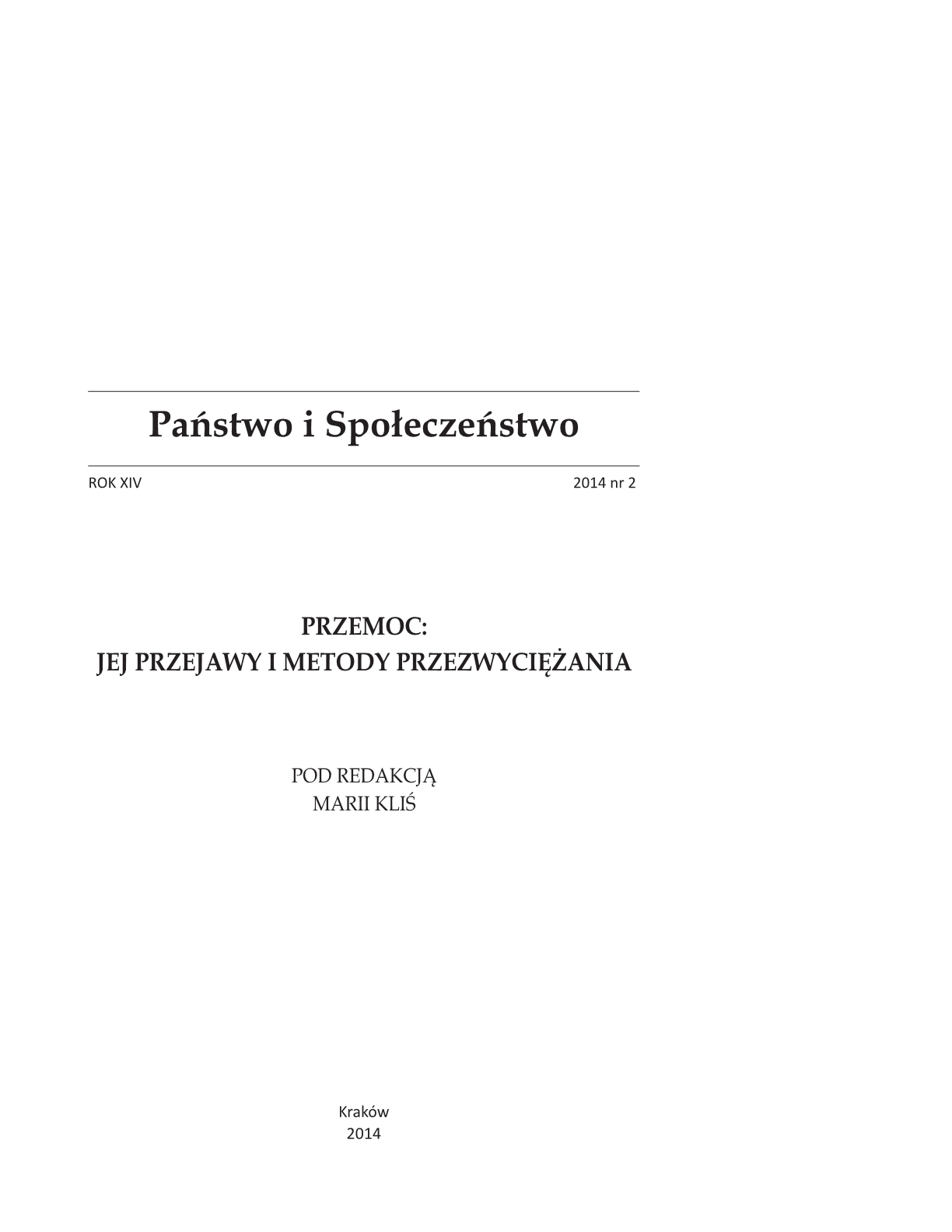
Keywords: violence; sociology of violence; performances;
We live in the world of ubiquitous violence and on the other hand, reflection over violence. Violence breeds violence, but what breeds reflection over the violence? According to Pierre Bourdieu, Harrison C. White, and others, we can say that violence could help us understand the social reality and create a more sophisticated theory which gain together the antisocial behaviors and their social and individual backgrounds. Anton van Harskamp in preface to work Conflicts in Social Science shows, that social violence compare to the others social problems is not a safe field of research. Numerous social scientists find themselves caught up in an inextricable entanglement of scientific conflicts and societal antagonisms, we have thousands – as van Harskamp says – theories about violence and conflicts. In naïve thinking we can say, that violence rose as a form of social metaphor. Especially for Pierre Bourdieu violence and conflicts are connected with the politics of language. In his theoretical and sociological universe, social capital, symbolical power and habitus help understand the hidden dimension of symbolic violence shown as the violence without violence. The next author Slavoj Žižek explore the inner world of violence as a social and language mechanism. Bourdieu and Žižek follow by philosophical and narrative theories show violence in the everyday experience as a pattern of individual behavior. In contrary to these authors, Harrisona C. White explore social conflicts as a part of social networks and social spaces. The leading theories will be divided into three main subjects: metaphors, symbols and performances, especially the Randall Collins conception of interaction ritual chains is preferred as a crucial for understanding the impact of violence into the society.
More...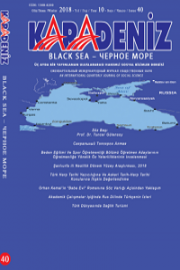
Keywords: State Thought; Theories of Society; Civil Society; New Community-State Model; Cahit Tanyol; Şerif Mardin;
Society is the main subject of sociology. The society in question, when the Anatolian society settled for more than thousand years after great migrations, the state becomes unthinkable from society and society also becomes unthinkable from the state. The concept of integrated thinking with the state, also applies to the concept of civil society. The Seljuk state and the Ottoman state dominated by the rules of Islam, until 1800s, it has maintained its conception of law that determines its social and political structure. After the military defeats, with the withdrawal process from Europe, the Ottoman Empire, which wants to prevent the decline of the scientific, military and economic processes, moves towards the Westernization/Modernization program which will deeply affect the individual, family and community forms. Existing social and political structures and cultural fabric in Turkey today understand correctly, it is possible to understand the characteristics, conditions and transmission of these processes from the Ottoman Empire. Cahit Tanyol (1914- ...) and Şerif Mardin (1927-2017), wrote a number of articles on society, civil society and government, they shared their views and sometimes took over existing approaches, sometimes developed them or sometimes formed their own approaches.
More...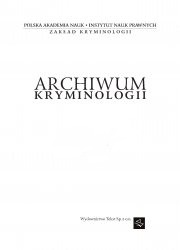
Keywords: ‘Law against beasts’;‘Gostynin’;dehumanisation;
This text analyses the effects of the demeaning construction of ‘beasts’ in the process of creating the Law of 22 November 2013 on dealing with psychotic persons endangering other people’s life, health, or sexual freedom – colloquially known as the ‘law against beasts’. The text analyses how such a label influences human, social, and legal relationships, and how it affects the implementation of constitutional, criminal, and civil law. It also confronts problems arising from the implementation of such laws.
More...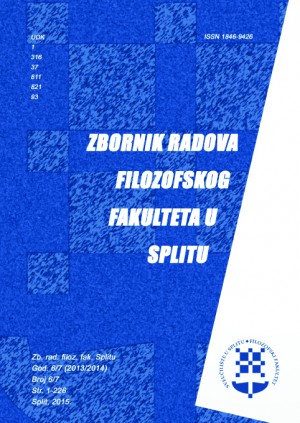
Keywords: Crime fiction; Croatian model; corpus; canon, competency of reading; genealogy of genre; postmodern deconstruction of the model;
This work provides a short overview of Croatian crime fiction with special attention placed on the form as it developed during the time of a Communist regime and afterwards. In the article the author claims that the crime fiction and the forms of fantastic prose that eventuated from this genre in the Croatian vernacular are of utmost importance for the development of post-modern Croatian prose. It is also suggested that this genre generated a certain amount of political awareness that undermined the stable picture of the canon as a diachronic chain of works without consideration of the subaltern voices/utterances othern to the hegemony of cultural power. In central part of the work two contemporary novels with strong subversive power at the formal level are discussed and analyzed. They are presented as representatives of post -modern, post-ethical prose and as the Croatian answer to post-crime fiction on the global scene. The work also suggests that the deviation from the scheme that is very often considered to be the main characteristic of the genre, in fact represents the literary value that enabled the creative interaction between the trivial and high art, mixing the popular and exclusively hegemonic in an unlikely fusion of post-modernity, either politically or in the realm of poetics and style.
More...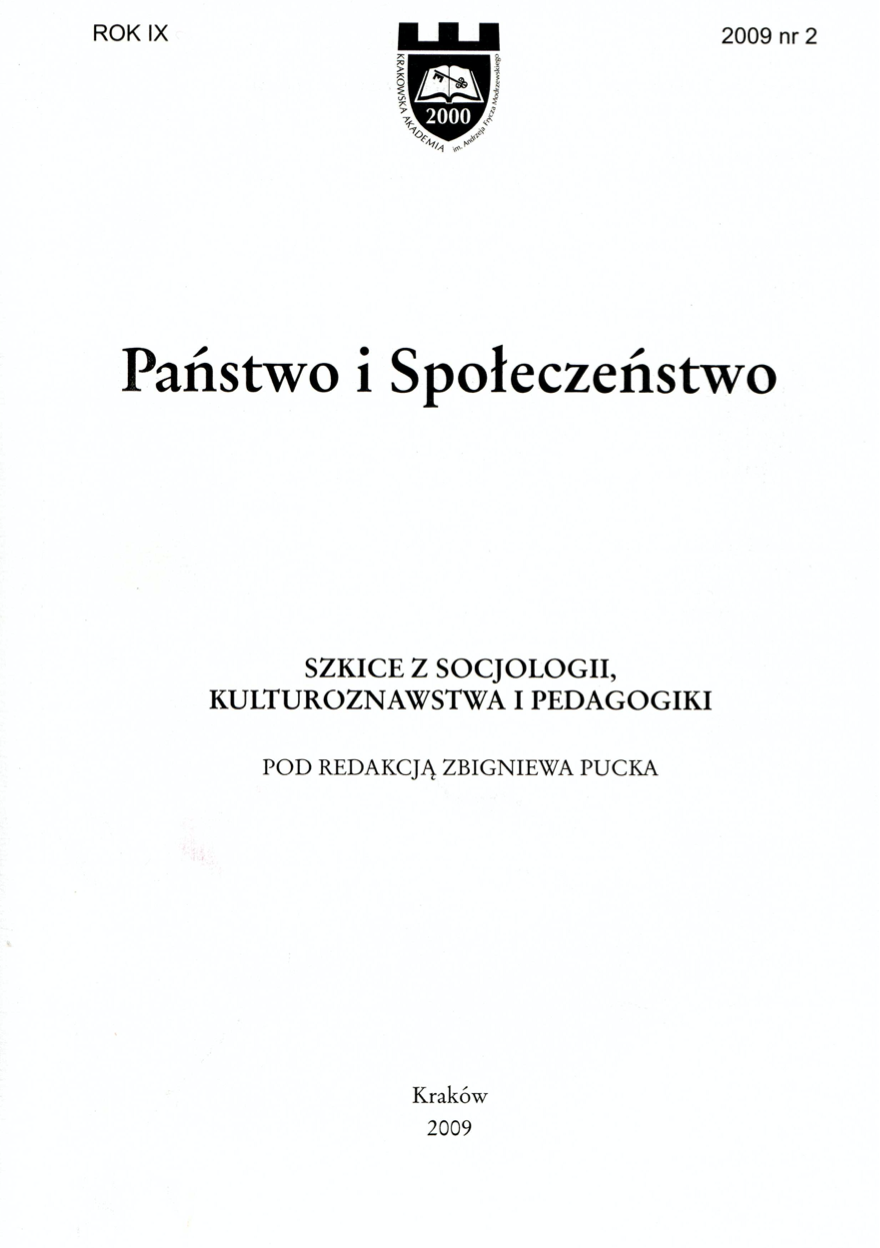
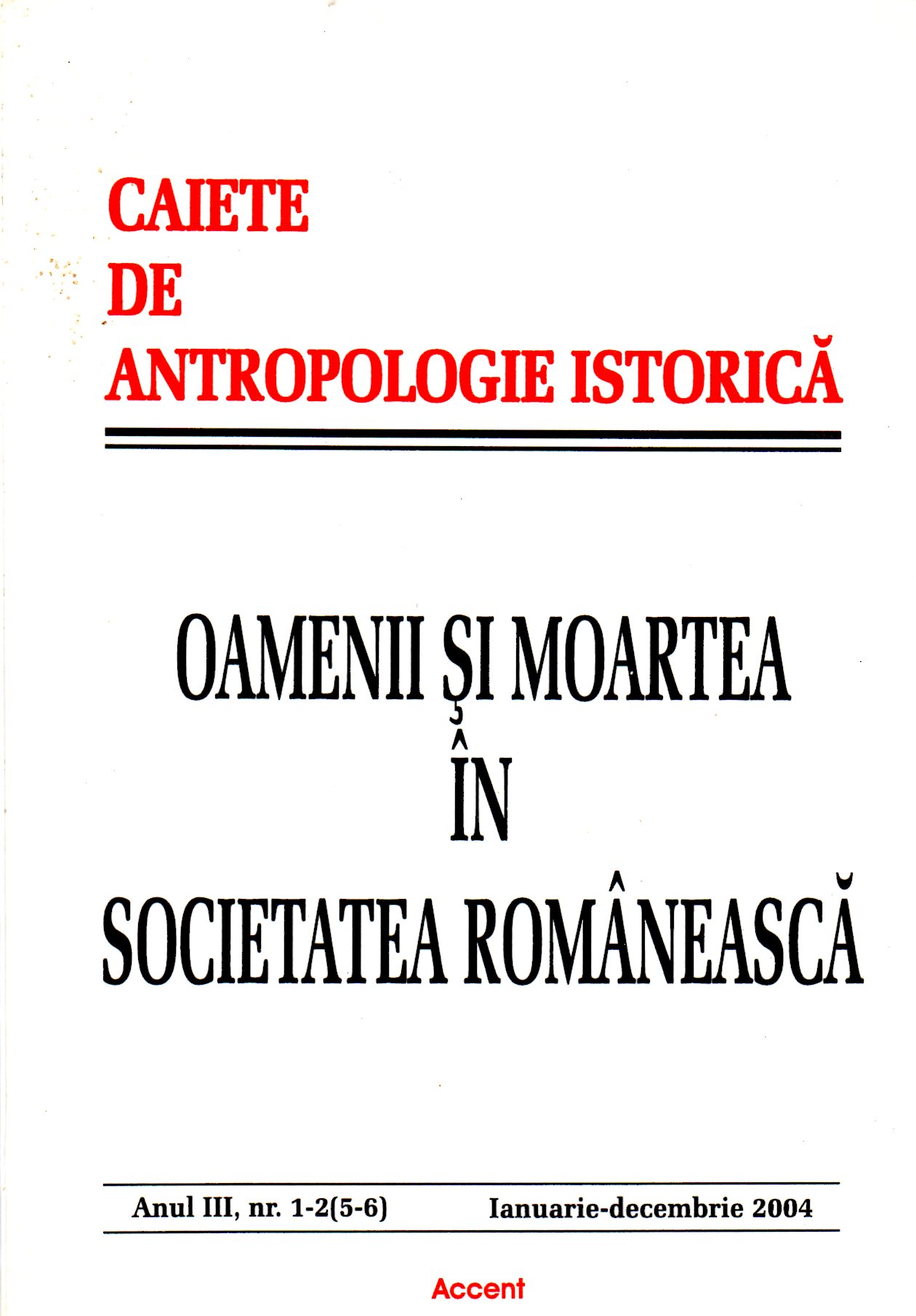
Keywords: death; suicide; Transylvania; phenomenon; crime; perception; psyche;
Considerând acceptată ideea că moartea ca şi concept, la persoana întâi, reprezintă un fapt situat doar la timpul viitor, şi că moartea indiferent de vârsta la care survine este un eveniment prematur, noi punem aceste două direcții în legătură cu ideea sinuciderii. Înțelesul sinuciderii apare astfel în mod esențial ca fiind supremul gest de violență îndreptată împotriva persoanei însăşi, ce forțează la extremă capitalul neînțelesului faptului de a trece din lume. Toate aceste aspecte pot constitui fundamentele unei adânci meditații asupra gestului din punct de vedere istoric. Deoarece fenomenul sinuciderii este unul în creştere şi asupra lui planează, astăzi, în principal un discurs de prevenire, analiza istorică poate urmări, datorită substanței sale de bază – timpul –, modalitățile concrete de percepere, explicație şi tratament într-un anume spațiu istoric a autoviolenței maximale. Utilizând surse diverse (legislație, tratate de medicină, literatură religioasă – de la canoane la omiletică –, presă de factură laică şi religioasă, literatură laică, scrisori şi răspunsuri la nivel personal şi oficial etc.) specifice pentru un spațiu multicultural, multietnic şi multireligios cum este Transilvania, studiul de față caută să surprindă maniera în care în cea de a doua jumătate a secolului al XIX-lea fenomenul sinuciderii se reflecta în diferite sensuri sau expresii: reglementările Statului asupra sinuciderii, capacitatea unui discurs medical de a explica gestul, tratamentul acordat sinucigaşilor de către Bisericile transilvane, presa vremii, producțiile literare sau practicile arhaice/folclorice în aceeaşi gamă. Rezultatul cercetării de față arată certe modificări survenite în epocă. Astfel începând din 1850 sinuciderea nu mai este considerată o infracțiune în Transilvania, discursul medical se dezvoltă ca şi posibilitate de explicare a gestului, influențând tot mai mult celelalte expresii ale vremii şi consideră autoviolența maximă tot mai mult o problemă ce ține de un fond psihic. Pe de altă parte, presa vremii utilizează semnificativ tema datorită potențialului său spectacular, iar la nivelul unui discurs religios al epocii, pe lângă respingerea pe baza canoanelor a fenomenului, remarcăm la nivel practic, o anume „acceptare” a sinuciderii sub motivația nebuniei. Din acest punct de vedere există diferite niveluri de tratare a chestiunii în epocă. Mai mult, în urma studiului de față, ce caută să răspundă în spiritul documentelor cercetate şi întrebărilor de ce oamenii se sinucideau, în ce fel şi pentru ce motive, pot fi trasate o serie de noi direcții care, pe viitor ar putea lărgi mai amplu o anchetă din punct de vedere istoric asupra morții voluntare.
More...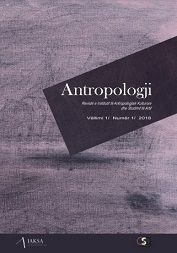
Keywords: Albanian mythology; cosmomorphic processes; Albanian socialist ethnography; cultural residues; anti-religious politics; scientific atheism;
The anti-religious policy of the Albanian totalitarian state recognizes three phases. If the first phase was determined by a surplus of State violence and its mechanisms of terror and the second phase by delegitimizing policies of the religious institutions and clergy, in the third phase, State’s anti-religious policies were installed on a disciplinary level through the method of scientific atheism, aiming at scientific liquidation of the religious spectrum in Albania. During the dictatorial period, especially after 1967, Albanian socialist ethnography has contributed to the profanation of the Albanian mythological configurations, rites and practices, by serving the Albanian State’s atheistic programmatic, which aims at creating the one-world man.
More...